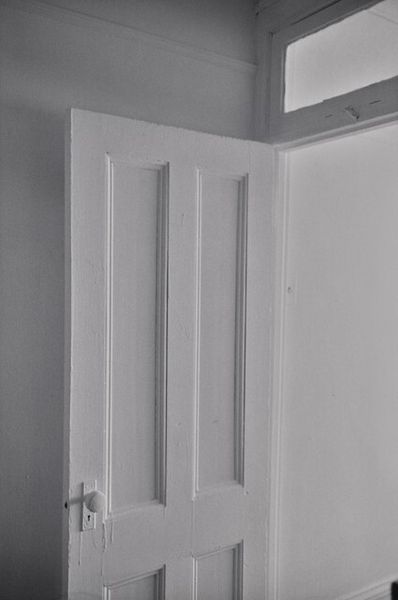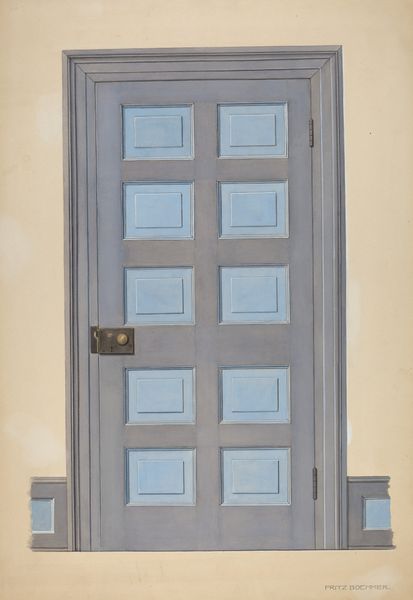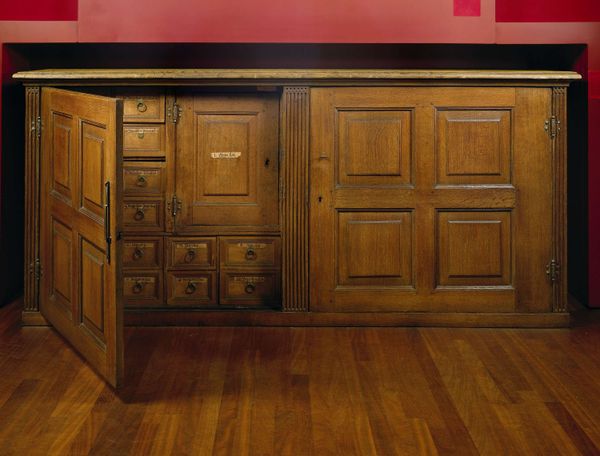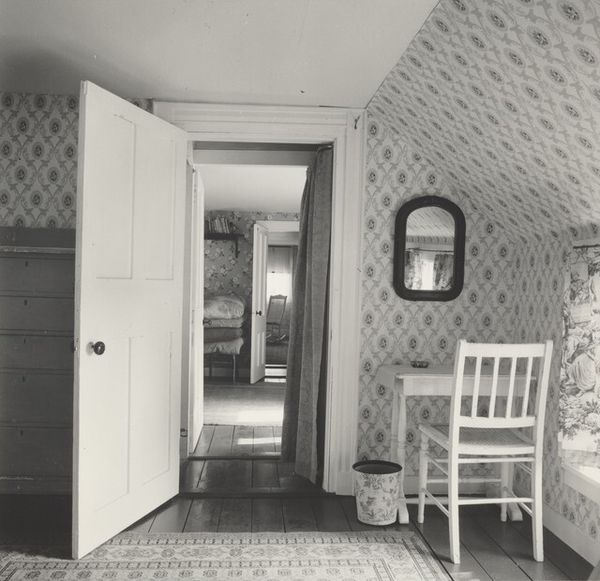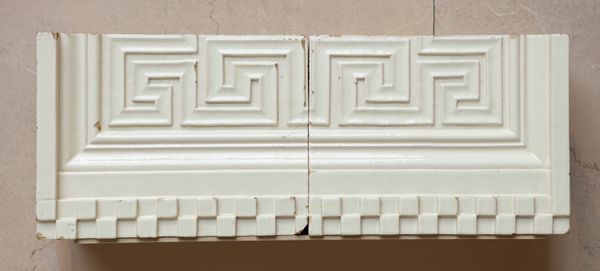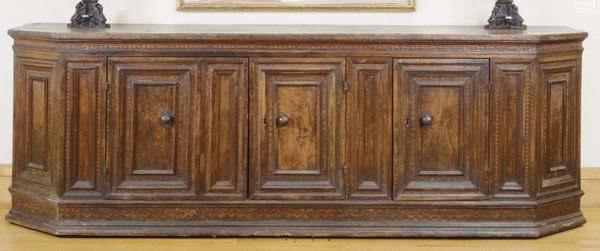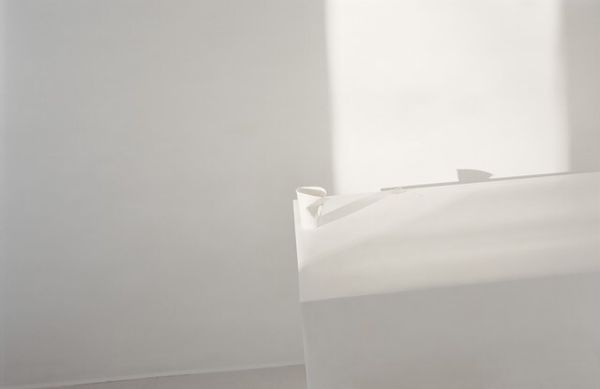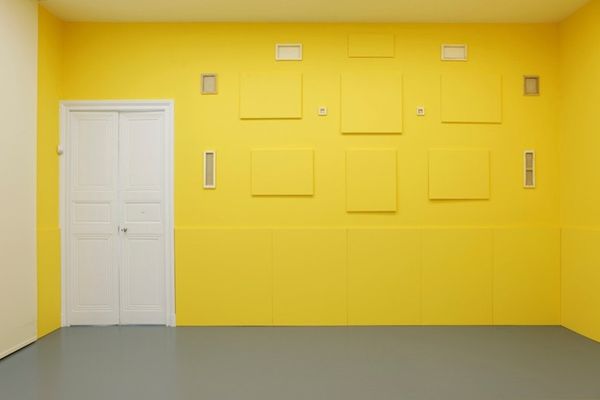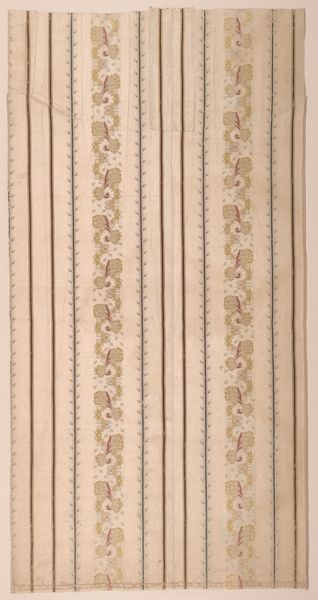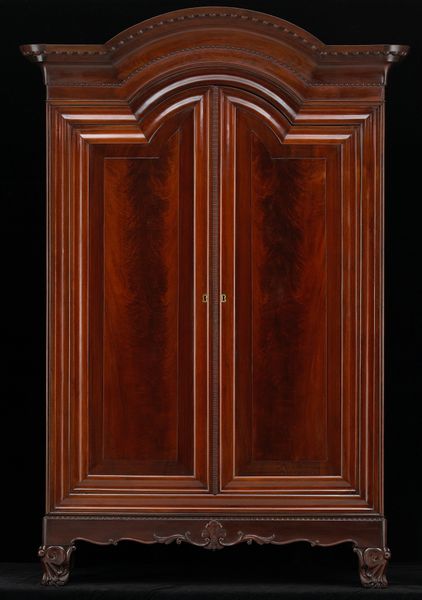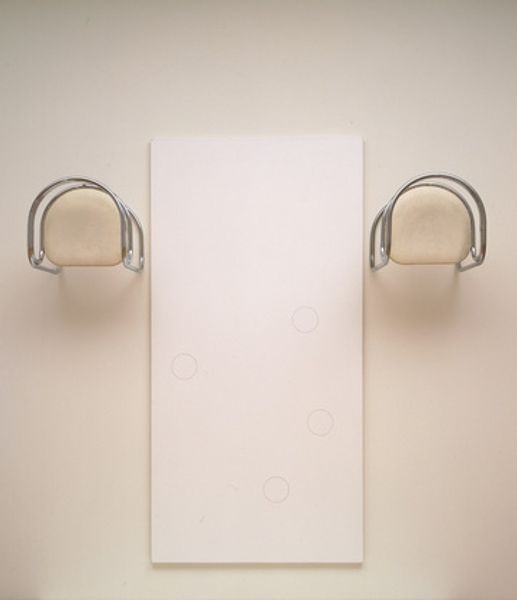
photography
#
portrait
#
water colours
#
photography
#
watercolor
#
realism
Dimensions: image: 50.8 × 76.2 cm (20 × 30 in.) sheet: 60.96 × 86.36 cm (24 × 34 in.)
Copyright: National Gallery of Art: CC0 1.0
Curator: This piece, titled "Ocean House Road," is a photograph by Justin Kimball, likely taken between 2010 and 2013. Editor: My first impression? Claustrophobia. That wallpaper is…intense, and those tightly framed doors feel like an exit, or perhaps no exit at all, but a loop? Curator: I'm drawn to the wallpaper. It evokes a very specific era, perhaps the mid-20th century, with its repeating motif of cartoon puppies. But it’s not just decorative; it hints at a history, a lived space and also cultural archetypes for domesticity, and even vulnerability with the repeated motifs of cuddly innocence. The light switch partly hidden by wallpaper could signify change over time and function within a family dynamic. Editor: And isn't it interesting how Kimball juxtaposes that dated, arguably saccharine, imagery with a photograph? We’re used to this kind of staged scene in other fine arts, so I’m wondering about Kimball’s choices that blur lines and create some discord. What comment might he be making? The composition positions the door to partially obscure an entry or an exit, suggesting both containment and access. Curator: Right. The tension lies in this dualistic portrayal of "home." Is it haven or a kind of stylish trap? The pastel palette usually synonymous with comfort here it comes across almost as unsettling, and consider, too, how this image reflects contemporary photography's influence on visual culture, including the social and historical construction of the very idea of a "happy family". Editor: Plus, the two doors—one painted blue, the other white—open to reveal nothing. There’s no obvious narrative here. This contributes to the sense of unease. What do these doors guard, or perhaps, what do they attempt to keep out? The composition is very flat, emphasizing the surface and the lack of depth and creating a bit of a narrative puzzle. Curator: That gets me thinking about the concept of transitional spaces and the idea of liminality - the state of being in between one thing and another, it suggests potential, and perhaps even anticipation, and makes me ponder psychological impacts. Editor: I agree, I hadn't considered the threshold effect and symbolic power of the open doorways and how the open access leads to another chamber and adds layers to the experience! Curator: I will view photographs with an eye to cultural implications and narrative layering. Thanks for this interesting dialogue.
Comments
No comments
Be the first to comment and join the conversation on the ultimate creative platform.
